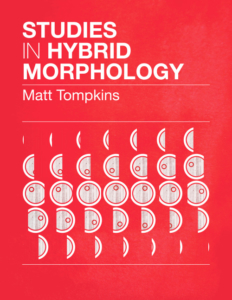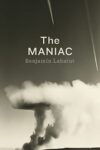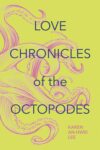 [tNY Press; 2016]
[tNY Press; 2016]
As the conventional boundaries instilled between us and other animals seem to become increasingly fluid, nurturing possible trans-species scenarios might not be that scary after all. So, if you are willing to temporarily submit yourself to a framework lacking in any kind of human-centered ethics, then you might actually enjoy mapping obscure episodes of xenotransplantation conducted in your absence. And such tongue-in-cheek Studies in Hybrid Morphology can help you do exactly this by blueprinting faux transplant procedures between the human and the non-human from the patient’s painfully biased perspective. Allegedly, several interviews and questionnaires were conducted in the aftermath of the surgeries. These concluding reviews are all illustrating patients who are still human to some extent and more or less content with their new accessories. Every pseudo-case is as clinical and chilling as it gets. Each compilation of such pseudo-cases comes with bizarre medical references and bibliographical notes, almost making you forget that you are reading a booklet and not a hospital record. But eventually, the birth of every trans-species subject saves you any goose bumps as the non-human enhancements are integrated in the patient’s life, although they may take a toll when it comes to staying completely functional in human terms.
SUBJECT B
Age: 37
Sex: M
Donor: Scarlet Macaw
(Ara macao)
Subject B was born lipless, and congenitally lacked the ability to grow teeth. B’s parents, desperate to give their child a chance at happiness and a semblance of normalcy, arranged to have B’s mouth replaced with the beak of a Scarlet Macaw. And though, as an adult, he is unable to kiss his wife, and his speech is badly clipped, B makes a good living as an artisan tinsmith, using the beak’s sharp edges and pointed tip to snip, crimp, and punch intricate designs into ceiling tiles, lamp blinds, and other decorative paraphernalia. B admits that this is some significant consolation, citing his work as a source of great satisfaction—not to mention a decent living. Subject B’s wife expresses sadness at her husband’s inability to kiss her, and states that this has been a source of tension in their marriage. (…) B also notes he wears a leather sheath around his beak to sleep, to keep from stabbing either his wife or his pillow.
Final assessment: Qualified success.
The alternative human gestation and birthing methods handed over by these Studies in Hybrid Morphology are nothing short of astounding — they even include body-external incubation and body-augmented gestation as perfectly viable and also comfortable methods of having a baby without having to make too many adjustments to the baby carrier’s (mother/father) life. Matt Tompkins plays again with medical notions that, in this particularly bent context, become the very bones of otherworldly micro-fictions that are sure to tickle your logic. Even if these reproduction methods seem especially designed to match the parents’ emotional and mental wellbeing without focusing too much on the baby’s state, you may still grasp their warmth despite their technical layers. For instance, it is only in the end that the final result, e.g. the baby, is evaluated for potential side effects but even the most conclusive impact on the baby still seems to be filtered through his/her parents’ mindset. Nonetheless, you can’t help but notice that the physical consequences of these cases are not too far away from the bare naked reality of our days, at least not when it comes to the childless self-sufficiency of the modern coupledom.
Parents of egg-incubated infants displayed a notably lower incidence of post-partum depression, and a significantly reduced incidence of self-reported feelings of depression in cases of miscarriage or stillbirth. Compared to traditionally gestating parents, parents of egg-incubated infants also reported statistically lower levels of interest in whether their offspring were ultimately deemed “successful” in both their own eyes and in the opinion of society at large. When asked about their initial reactions to the egg, the parents’ most common response was “I know this egg contains my child, but when I look at [the egg], I feel an alien presence, or nothing at all.”
Once they have human laryngeal tissues implanted in their trachea, non-human subjects continue to have the same behavioral patterns except for several episodes that are strikingly human in their self-awareness: a rainbow trout interested in moon phases, cows burdened by existential questions, tortoises caught in solving mathematical equations of various forms, birds that are fond of swearing and doing it in the most melodious manner, cats that have no shame in showing their genuine disinterest in the same manner humans do. All these fictitious entries in a scientific journal are carefully selected and arranged only to conclude that the experiment itself is inconclusive in terms of its practical implications. I mean, who would really like to know that the prepared non-human on his/her plate used to speak not so very long ago, or, even worse, that the “food” used to be more intelligent and critically engaged that the eater? As this pseudo-scientific account does not plan to put an end to its surreal incidents and reviews, it goes even further by scrutinizing the behavior of corned horses but beware, these are not unicorns as you might believe. On the contrary, they are alive and kicking domestic horses that were made cornate by grafting horns taken from another non-human donor — in this particular case, a monodon monoceros (narwhal). Uni-, bi-, tri- and quadri-horned horses are closely monitored in their displays of reverence/deference, struggles for dominance and mating behavior and the outcome is again more comparable to an open end than to an experimental achievement.
One researcher reported observing several of the cornate animals spontaneously take to the air in flight for a period of several seconds, before gliding gently back to the earth and landing softly on their feet. However, because this observation was uncorroborated by any of the other researchers, and was not photographically documented, it is recorded here only as an observational anomaly.
Displayed as a pioneering study, the transplant of a human brain into a non-human subject found its trigger in the assumption that some of us would be interested in finding out more about what exactly make us the humans that we are. This final pseudo-case case follows Subject M, a male in his mid-thirties, whose brain has just been transplanted into a Florida manatee (namely a pretty friendly marine mammal). Tracking behavioral changes occurred to the newly reconfigured test subject (Andrew) on a daily basis, the investigation ends with a cross-species expression of mindfulness that reminds you that, after all, you are still reading a piece of fictional science that is not supposed to be subjected to the constraints of a particular literary genre.
After several months, Andrew reports (and researchers support with diagnostic data) ongoing integration of the human brain with other components of the manatee nervous system. Andrew describes his vision being “clearer, though still somewhat milky” and his other senses as “increasingly and satisfactorily acute.” His nerve function overall has continued to improve, and he now moves proficiently around his tank (and even occasionally, with the help of an entourage from the marine center, makes forays to the nearby ocean, to “stretch his fins in a much larger pool.”) By all accounts, this experiment has been an overwhelming success.
An eerie sequence of experimental fictions cloaked as faux-scientific reports and followed by explanatory notes that only augment your bewilderment instead of brushing it away (“incubatory – (adj.) cozy; middle temporal gyrus – (n.) one temporal gyrus sandwiched in-between two other temporal gyri; like a middle child, it often serves as a mediator or go-between; neonate – (n.) newborn; rhymes with: defecate, regurgitate, sanitate, ululate, perambulate, exasperate, susurrate, sedate”), Matt Tompkins’ Studies in Hybrid Morphology might also be perused as a codex of potential trans-human identities.
This post may contain affiliate links.







